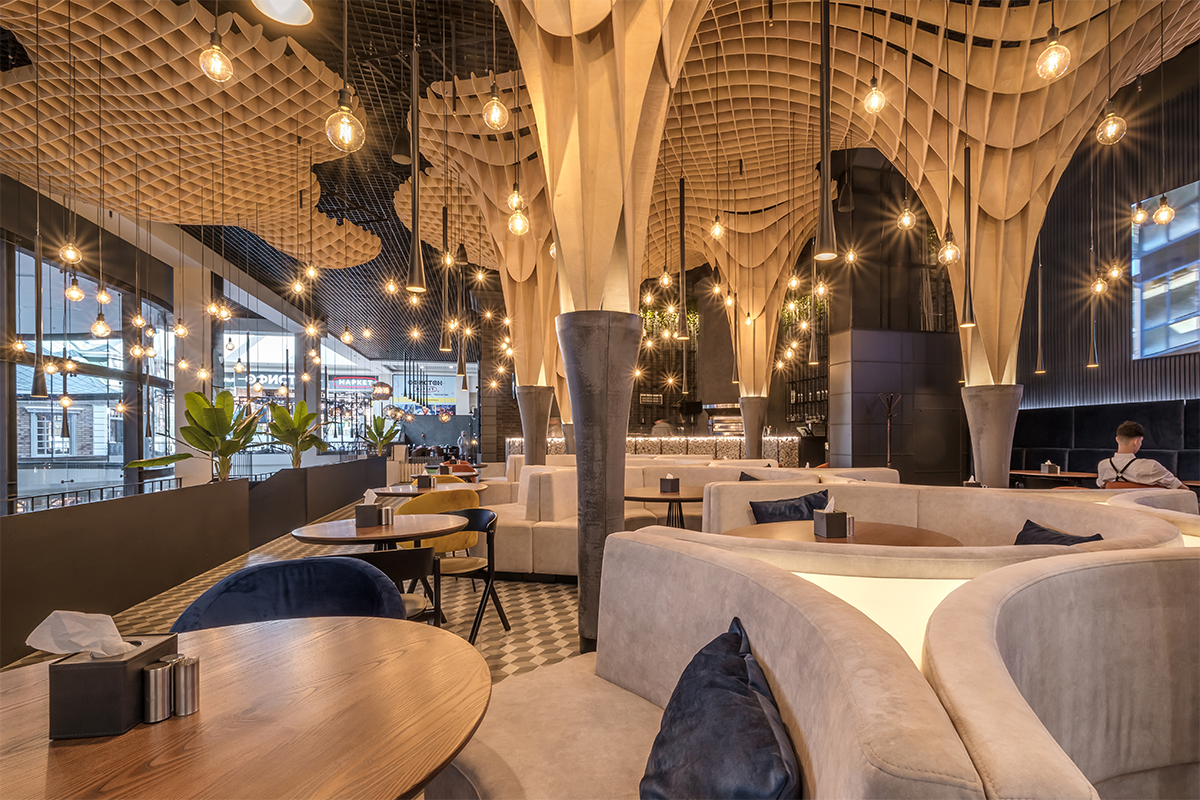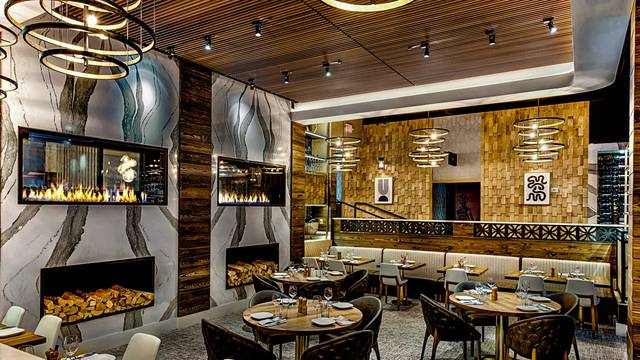Chinese Food Islamabad: Delight In Authentic Chinese Cuisine at its Best
Chinese Food Islamabad: Delight In Authentic Chinese Cuisine at its Best
Blog Article
Savor Genuine Asian Food With a Pan-Asian Twist for a Cooking Adventure
Starting a culinary trip via genuine Eastern food, improved with a Pan-Asian twist, provides a special possibility to check out the abundant tapestry of flavors that specify the region's diverse cooking practices. This experience invites you to appreciate the elegant balance of preferences-- pleasant, salty, spicy, and sour-- harmonized by fragrant herbs and flavors. Imagine the cutting-edge combination of Thai curry and ramen or the unexpected delight of sushi burritos. As you ponder these tempting meals, think about the social stories and historical influences that form them, each bite supplying a story waiting to be uncovered.

Exploring Pan-Asian Tastes
In the world of international gastronomy, Pan-Asian food sticks out for its impressive variety and the unified interplay of tastes from different Oriental cultures. This culinary approach commemorates the abundant traditions and special components located across the continent, creating a tapestry of tastes that is both intriguing and satisfying. Trick to Pan-Asian food is its capability to balance contrasting flavors-- pleasant, salted, spicy, and sour-- while highlighting the quality and top quality of each component.
From the umami-rich soy sauce of Japan to the intense chili peppers of Thailand, Pan-Asian cuisine supplies a considerable palette of tastes. These elements are usually integrated in inventive means, boosting dishes with layers of intricacy. For example, the usage of great smelling herbs such as lemongrass and cilantro, usual in Vietnamese and Thai food, adds a refreshing illumination to recipes, while the incorporation of coconut milk supplies a luscious, abundant appearance.
The emphasis on fresh produce and aromatic spices makes sure that each dish is not just a banquet for the taste but likewise for the detects. Pan-Asian cuisine welcomes diners to start a cooking trip, discovering the vast and varied landscapes of Oriental gastronomy with every bite.
Combination Recipes to Try
While Pan-Asian cuisine is commemorated for its conventional tastes, the modern cooking landscape is increasingly welcoming blend meals that blend these classic aspects with impacts from various other regions. This innovative strategy not only honors the rich heritage of Eastern cookeries yet additionally presents unique taste experiences that appeal to modern tastes buds.
A prime example of such a fusion meal is the Korean-Mexican taco, where marinated bulgogi beef is covered in a cozy tortilla, topped with kimchi and a spicy gochujang-infused salsa. This mix marries the bold, savory flavors of Korea with the lively, fresh aspects of Mexican cuisine. Similarly, sushi burritos have actually gained appeal, joining together the delicate artistry of Japanese sushi with the passionate, hand-held comfort of a burrito, often including blend active ingredients like tempura shrimp and avocado with a drizzle of wasabi mayo.
An additional notable meal is Thai curry ramen, which infuses the creamy, fragrant flavors of Thai curry into the reassuring brew of standard Japanese ramen, creating an unified blend that entices the detects. These combination recipes extend beyond simple novelty; they represent a culinary discussion between cultures, urging expedition and technology worldwide of Pan-Asian food.
Important Active Ingredients and Spices
To really appreciate Pan-Asian food, one should understand the crucial ingredients and seasonings that create its foundation. This diverse culinary design draws from a rich tapestry of Oriental customs, utilizing an unified blend of appearances and flavors. Secret ingredients consist of soy sauce, fish sauce, and oyster sauce, which pass on a tasty umami deepness vital to Asian recipes. Corresponding to these are rice vinegar and mirin, lending a fragile acidity and sweetness.
Fragrant components are critical, with lemongrass, ginger, and garlic being ubiquitous across numerous Pan-Asian dishes. These components offer an aromatic base that improves the complexity of tastes. Flavors such as star anise, cardamom, and cinnamon introduce warmth and personality, echoing influences from regions like China and India.

Cooking Methods and Tips
Understanding the art of Pan-Asian cuisine needs familiarity with its distinct cooking methods, each contributing to the dynamic tapestry of flavors this cooking practice is celebrated for. Central to these methods is the stir-fry, a rapid cooking strategy that maintains the dietary stability and vivid colors of active ingredients. Utilizing a frying pan, the stir-fry technique permits also warmth distribution, vital for accomplishing the characteristic texture and taste balance of Pan-Asian dishes.
Another fundamental technique is steaming, particularly widespread in Chinese food. This mild technique maintains the all-natural tastes and nutrients of active ingredients, making it ideal for fish and shellfish and veggies. look what i found Dumplings, a precious staple, often take advantage of steaming, leading to soft, succulent structures.
Barbecuing, likewise essential, presents great smoky midsts to recipes such as Oriental bulgogi or Japanese yakitori (Best ambiance restaurants Islamabad). This technique commonly involves marinating components, permitting tastes to penetrate deeply before food preparation over an open fire or warmer
Last but not least, mastering the art of stabilizing flavors-- pleasant, sour, salty, bitter, and umami-- is essential. Correctly layering these components can elevate a meal from regular to phenomenal, offering a complicated and pleasing culinary experience that embodies the significance of Pan-Asian food.
Eating Experiences Worldwide
Throughout the world, Pan-Asian cuisine offers an unrivaled eating experience, commemorated for its abundant tapestry of tastes and lively presentations. This culinary sensation has transcended cultural limits, recording the hearts and palates of food enthusiasts worldwide. In worldwide cities like New York, London, and Sydney, Pan-Asian dining establishments act as fusions where culinary customs from Thailand, Japan, China, and beyond assemble, giving restaurants with an eclectic mix of dishes that highlight the area's variety.
The worldwide allure of Pan-Asian food depends on its capability to offer both credibility and advancement. Cooks skillfully marry conventional active ingredients such as click now lemongrass, soy sauce, and miso with contemporary strategies, resulting in meals that are both acquainted and refreshingly brand-new. This blend enables restaurants to get started on a cooking trip that appreciates heritage while embracing modernity.
Moreover, dining experiences are elevated via thoughtfully developed settings that show the ethos of Pan-Asian aesthetic appeals. From minimalist Japanese-inspired interiors to vivid Thai-themed rooms, each restaurant offers an one-of-a-kind ambiance that enhances the culinary offerings. As a result, customers are not just consuming a meal yet partaking in a cultural experience, making Pan-Asian dining an absolutely worldwide phenomenon.
Conclusion
The expedition of Pan-Asian food uses a profound understanding of the detailed interplay of tastes and culinary traditions across Asia. By accepting fusion meals such as Thai curry ramen and sushi burritos, the cooking journey not only highlights the adaptability of conventional active ingredients yet also showcases innovative contemporary methods. This gastronomic experience, enhanced by necessary flavors and cooking approaches, offers a distinct chance to appreciate the cultural variety and cooking creativity that specify Pan-Asian cuisine on a worldwide scale.
Embarking on a cooking trip via authentic Asian cuisine, boosted with a Pan-Asian twist, provides an one-of-a-kind possibility to explore the abundant tapestry of tastes that define the region's varied culinary customs.In the realm of global gastronomy, Pan-Asian food stands out for its impressive diversity and the unified interaction of tastes from various Asian cultures. Key to Pan-Asian food is its capability to balance different flavors-- pleasant, salty, spicy, and sour-- while highlighting the freshness and quality of each active ingredient.

Report this page